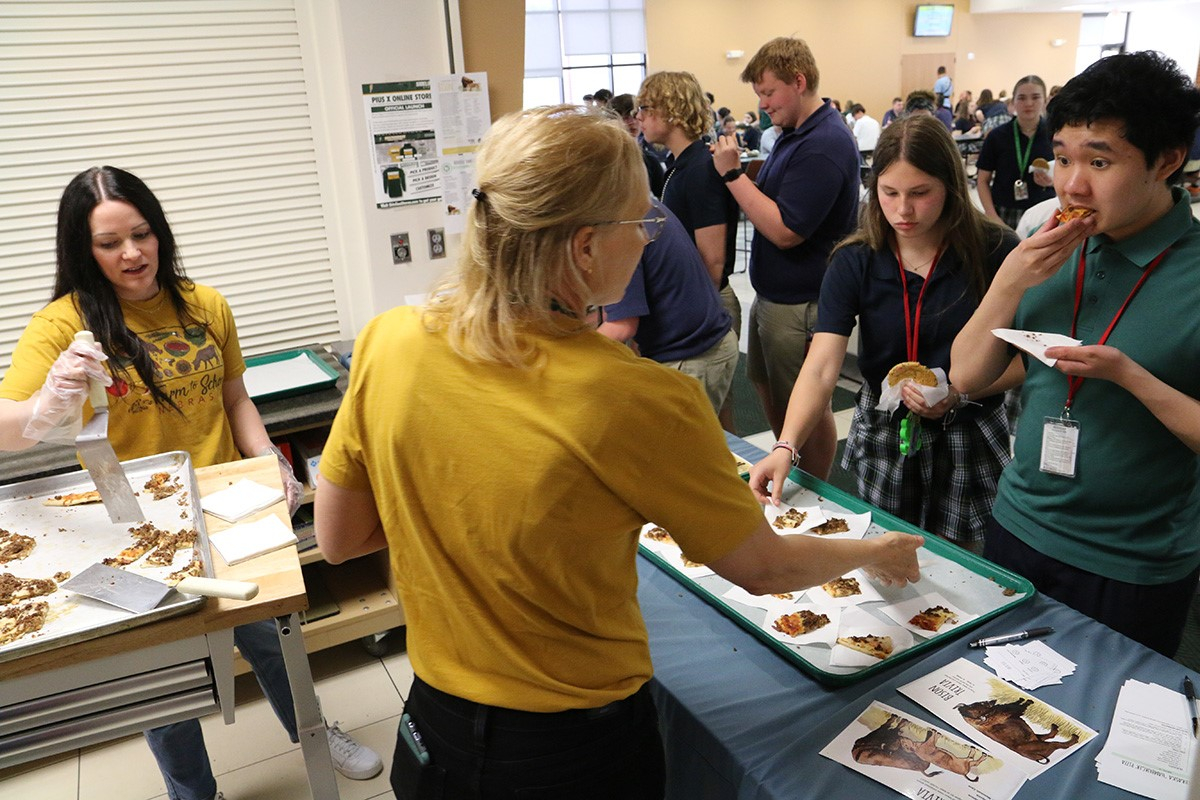
Lincoln, Neb. —In the 2022-23 school year, Nebraska’s Local and Indigenous Foods Training (LIFT) program offered a unique educational experience for food service staff, students and farmers. This initiative, part of the Nebraska “Farm To School” program, is a collaboration between the Nebraska Department of Education and Nebraska Extension in partnership with the U.S. Department of Agriculture (USDA).
The LIFT program highlighted school recipes using Nebraska food items such as apples, aronia berries, beef, bison, rhubarb, turnips as well as the following identified indigenous foods: corn, dry beans, winter squash, summer squash and native herbs.
A unique feature of LIFT is that it engages students in the process of creating, testing and marketing recipes and local foods for use in the school meal programs. The program also provides school food service staff with resources to connect with local farmers to bring more local foods into the cafeteria.
Benefits of the LIFT program
Each LIFT school received a grant reward for their participation in the project. Pius X, one of 16 schools involved in the program, used a portion of its funds on a new digital board for the cafeteria. The board displays the menu for the day, featuring local foods being served and about the local farmers providing these foods.
The LIFT recipes that reach an 85% acceptability rate are sent to USDA to post to the Child Nutrition Recipe Box (CNRB), publicly recognizing the schools involved in the taste tests. The CNRB provides Child Nutrition Program operators with recipes to prepare healthy, delicious meals that are standardized to meet meal pattern requirements and crediting information.
Students engaged in culinary experience with local and indigenous foods
Each school sampled, evaluated, marketed and menued two recipes created for the program. Students experienced the recipes through two formats: Small group activity in a classroom — called Chef’s Table — where students sampled the recipe and learned facts about the food, including historical, nutritional and agricultural aspects, and then explored in-depth sensory and marketing considerations. And the next phase was the cafeteria taste test for the entire school.
“Introducing and incorporating Nebraska indigenous foods in our classrooms and cafeteria at Pius X High School ignited a whole new learning experience for students, teachers and kitchen staff,” said Carmen Goeden, director of Nutrition Services at Pius X.
The project involved school nutrition services, teachers, staff, students and administration. Alyssa Havlovic, Extension educator in Lancaster County, served as a coach and helped implement activities. Pius X was selected to test two recipes: Brownie Batter Hummus and a Bison Pizza Topping, using local black beans and bison.
Havlovic led Pius X’s Chef’s Table activities with students in AP Biology and AP Agriculture classes. Students provided feedback on the taste, texture, and appeal of the recipes, then created marketing materials to promote the recipes to their peers. Members of the food service staff listened to student feedback and then implemented their suggestions for the cafeteria taste test.
During the cafeteria taste test of the Brownie Batter Hummus, students were surprised to learn that the recipe was made with black beans but couldn’t detect the “bean texture” they were expecting. Of the 247 students who sampled the brownie batter hummus, 91% of students reported they either “liked it” (48%) or “loved it” (43%).
The cafeteria taste test results for the “Bison Pizza Topping” revealed that nearly 98% of the 239 students “loved it” (80%) or “liked it” (18%). When the bison pizza was offered as an entree on the cafeteria lunch menu, the food service staff served 976 servings of bison pizza! It is safe to say this recipe was a success and will appear on the menu again at Pius X High School.
“This program,” Goeden said, “gave the opportunity to learn how to prepare new foods, meet new producers and gave the students a voice to express their preferences with the kitchen staff and market new foods to their peers. We are excited to continue to add and introduce more local food and producers to the Pius X community.”
